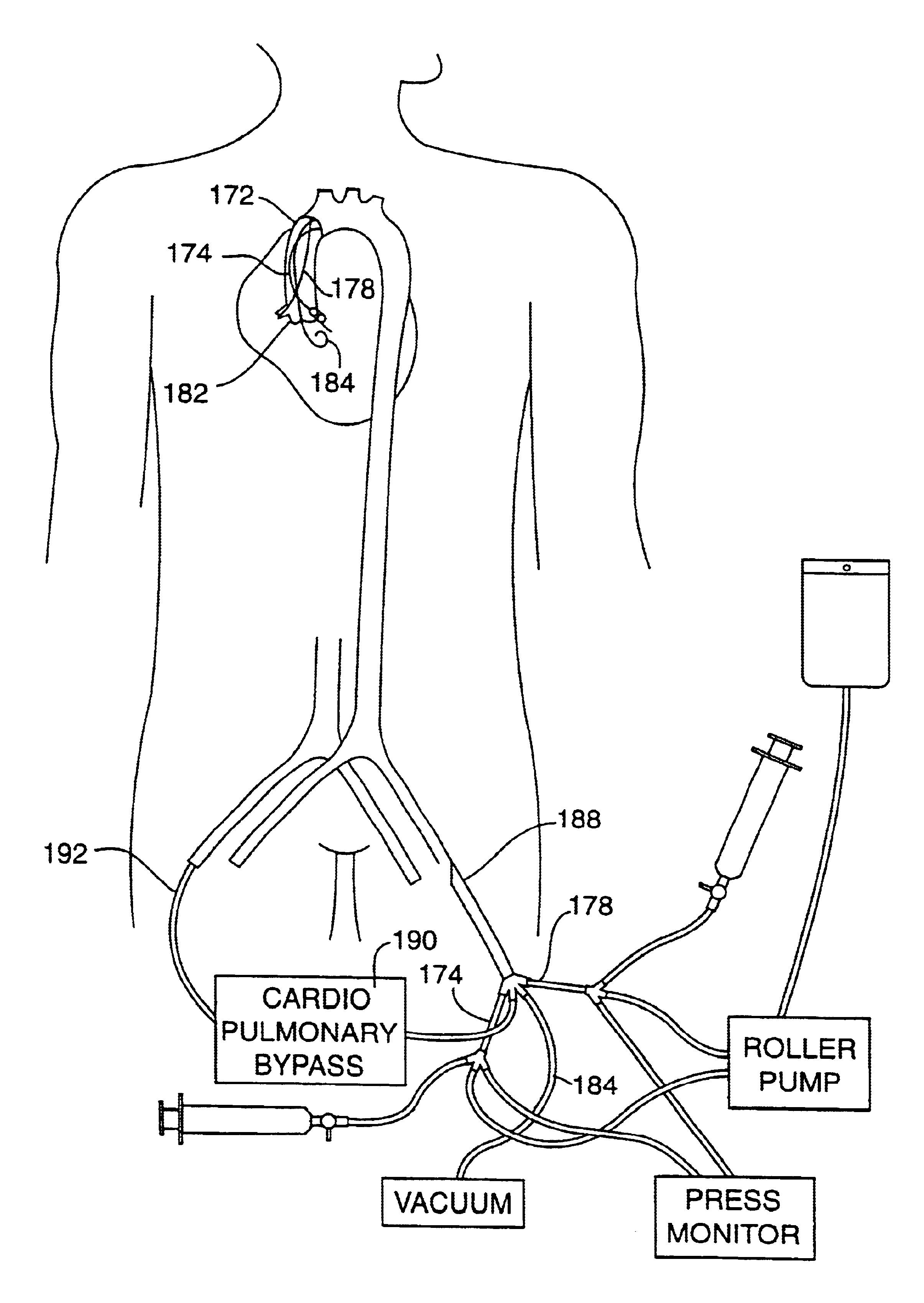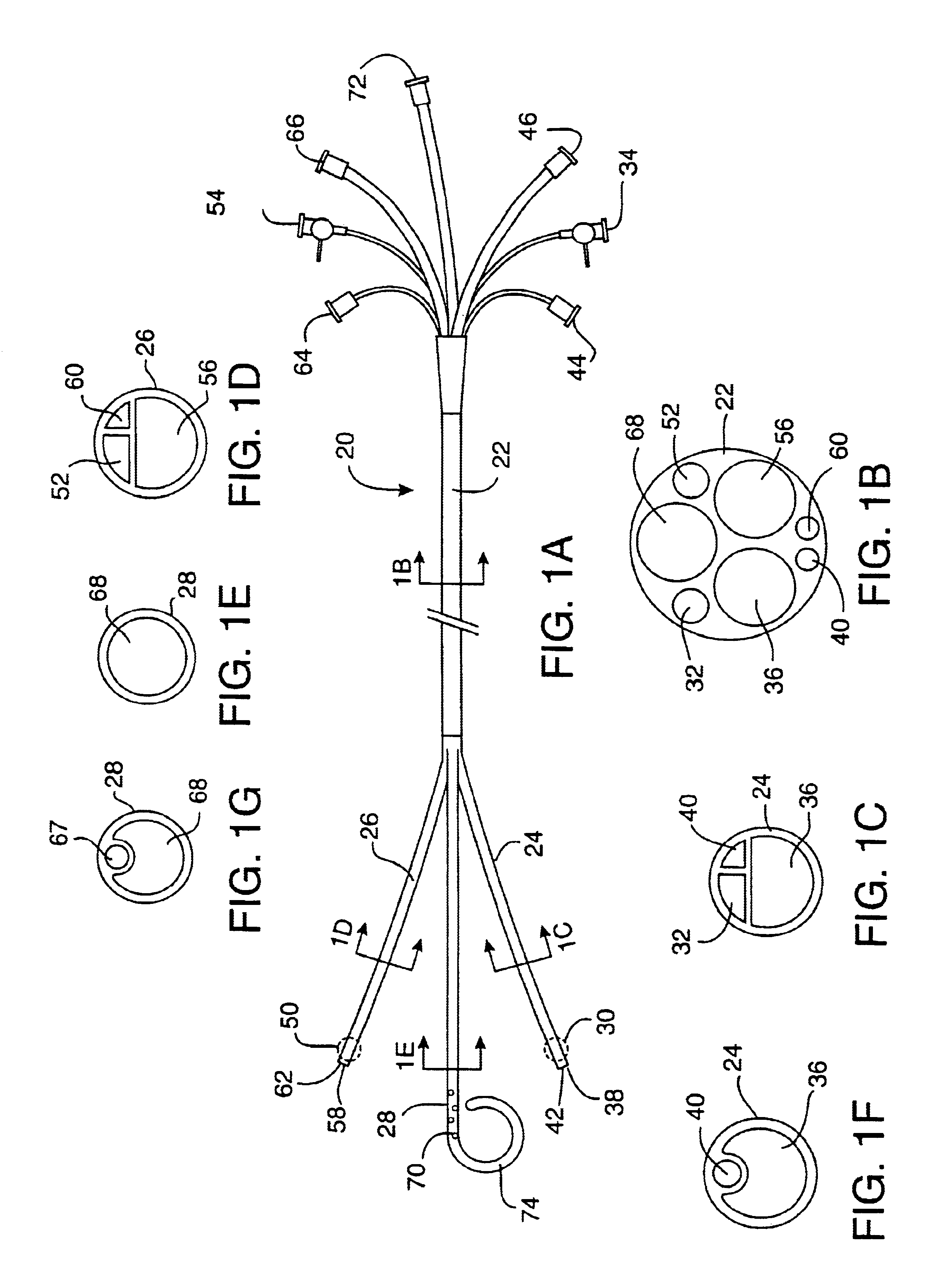Method for delivering a fluid to the coronary ostia
a technology of coronary ostia and fluid delivery, which is applied in the direction of contraceptive devices, other blood circulation devices, catheters, etc., can solve the problems of obscuring the surgical site, affecting the patient's recovery, and many cardiac surgery procedures cannot be effectively performed on a beating heart. achieve the effect of maintaining cardioplegic arres
- Summary
- Abstract
- Description
- Claims
- Application Information
AI Technical Summary
Benefits of technology
Problems solved by technology
Method used
Image
Examples
first embodiment
[0036]FIGS. 1A-1E illustrate the coronary perfusion catheter for use in the method of the present invention. In this embodiment, a single arterial catheter 20 is used to deliver cardioplegic solution to all of the coronary arteries. A side elevation view of the catheter 20 is shown in FIG. 1A. The single catheter 20 has an elongated shaft 22 and a plurality of distal branches 24, 26, 28 which are adapted for selective intubation and occlusion of each of the coronary ostia. In this illustrative example, the catheter includes a first distal branch 24 for engaging the left coronary ostium, and a second distal branch 26 for engaging the right coronary ostium. The catheter is also shown with an optional third distal branch 28 for venting blood from the left ventricle of the heart. All three of the distal branches join together to form a common proximal shaft 22.
[0037]The first distal branch 24 of the catheter has a first inflatable occlusion balloon cuff 30 at its distal tip. The balloon...
third embodiment
[0060]The perfusion catheters 174, 178 can be placed with fluoroscopic guidance by either of two methods. In the first method, the distal ends of the catheters are preshaped with selective coronary curves. The curves are straightened out with a stiff guidewire placed in the perfusion lumen, as shown by phantom lines 82′, 84′ in FIG. 4A, when the catheters are introduced into the femoral artery and advanced through the descending aorta and into the ascending aorta. When the guidewires are withdrawn the catheters resume their curved shapes which are adapted to be easily maneuvered into the coronary ostia. In the second method, the distal ends of the catheters are not precurved, but a curved steerable guidewire is used to direct each of the catheters into the respective coronary ostium. With the catheter system, illustrated in FIGS. 5A-5B, the curved guiding catheter can assist the steerable guidewire in directing the perfusion catheters to their respective coronary ostia. Alternativel...
PUM
 Login to View More
Login to View More Abstract
Description
Claims
Application Information
 Login to View More
Login to View More - R&D
- Intellectual Property
- Life Sciences
- Materials
- Tech Scout
- Unparalleled Data Quality
- Higher Quality Content
- 60% Fewer Hallucinations
Browse by: Latest US Patents, China's latest patents, Technical Efficacy Thesaurus, Application Domain, Technology Topic, Popular Technical Reports.
© 2025 PatSnap. All rights reserved.Legal|Privacy policy|Modern Slavery Act Transparency Statement|Sitemap|About US| Contact US: help@patsnap.com



